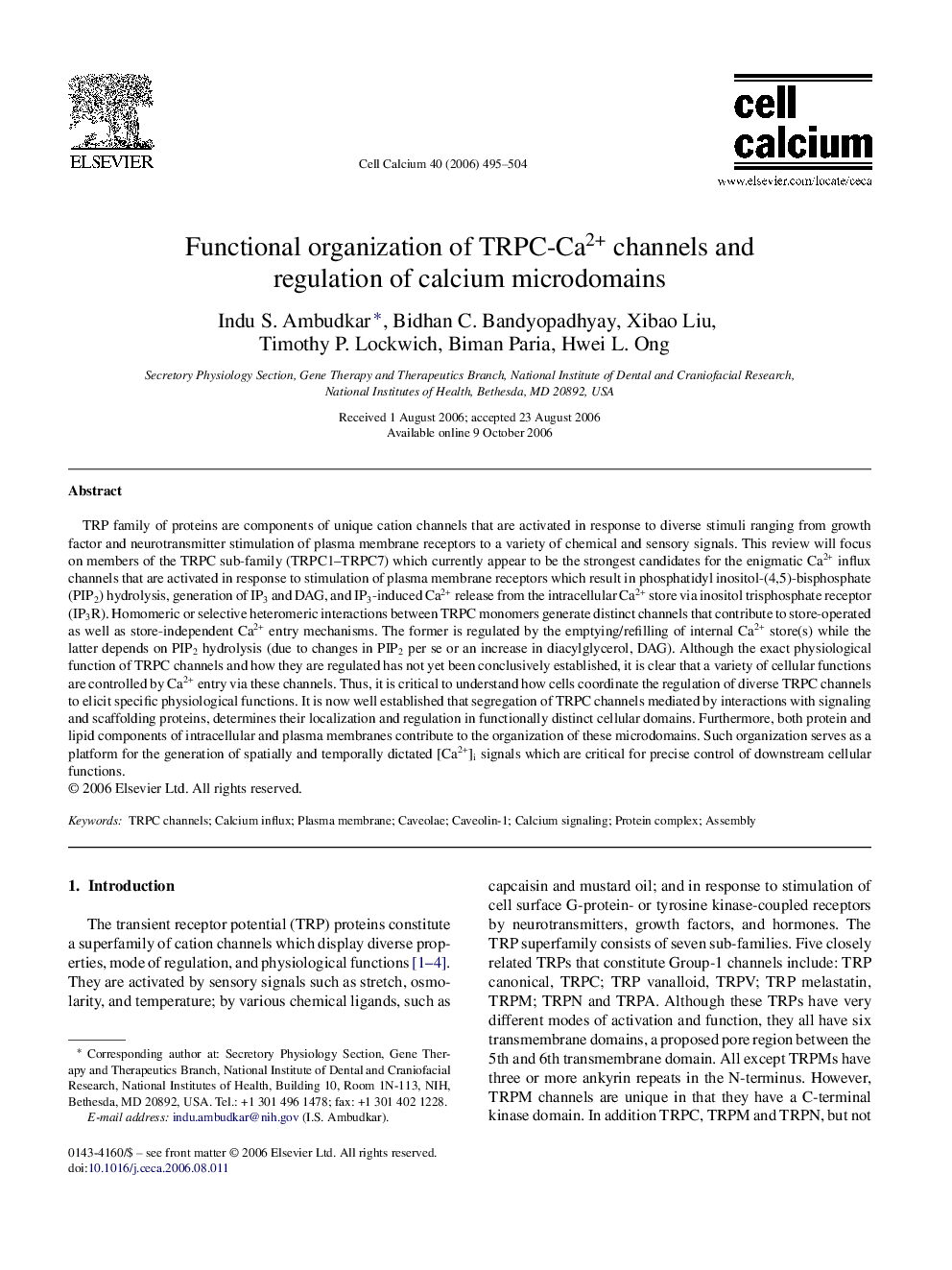| کد مقاله | کد نشریه | سال انتشار | مقاله انگلیسی | نسخه تمام متن |
|---|---|---|---|---|
| 2166701 | 1549326 | 2006 | 10 صفحه PDF | دانلود رایگان |

TRP family of proteins are components of unique cation channels that are activated in response to diverse stimuli ranging from growth factor and neurotransmitter stimulation of plasma membrane receptors to a variety of chemical and sensory signals. This review will focus on members of the TRPC sub-family (TRPC1–TRPC7) which currently appear to be the strongest candidates for the enigmatic Ca2+ influx channels that are activated in response to stimulation of plasma membrane receptors which result in phosphatidyl inositol-(4,5)-bisphosphate (PIP2) hydrolysis, generation of IP3 and DAG, and IP3-induced Ca2+ release from the intracellular Ca2+ store via inositol trisphosphate receptor (IP3R). Homomeric or selective heteromeric interactions between TRPC monomers generate distinct channels that contribute to store-operated as well as store-independent Ca2+ entry mechanisms. The former is regulated by the emptying/refilling of internal Ca2+ store(s) while the latter depends on PIP2 hydrolysis (due to changes in PIP2 per se or an increase in diacylglycerol, DAG). Although the exact physiological function of TRPC channels and how they are regulated has not yet been conclusively established, it is clear that a variety of cellular functions are controlled by Ca2+ entry via these channels. Thus, it is critical to understand how cells coordinate the regulation of diverse TRPC channels to elicit specific physiological functions. It is now well established that segregation of TRPC channels mediated by interactions with signaling and scaffolding proteins, determines their localization and regulation in functionally distinct cellular domains. Furthermore, both protein and lipid components of intracellular and plasma membranes contribute to the organization of these microdomains. Such organization serves as a platform for the generation of spatially and temporally dictated [Ca2+]i signals which are critical for precise control of downstream cellular functions.
Journal: Cell Calcium - Volume 40, Issues 5–6, November–December 2006, Pages 495–504